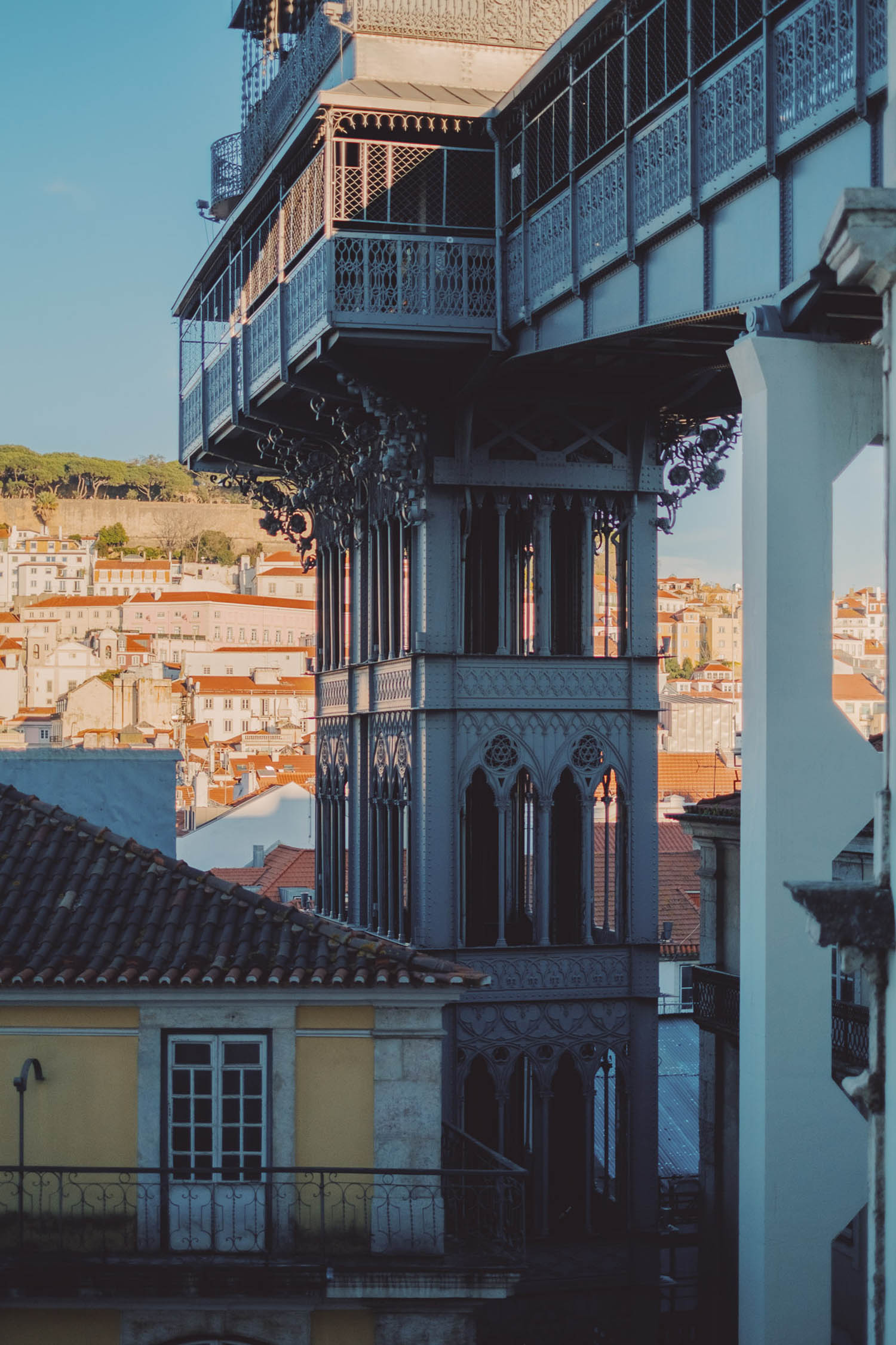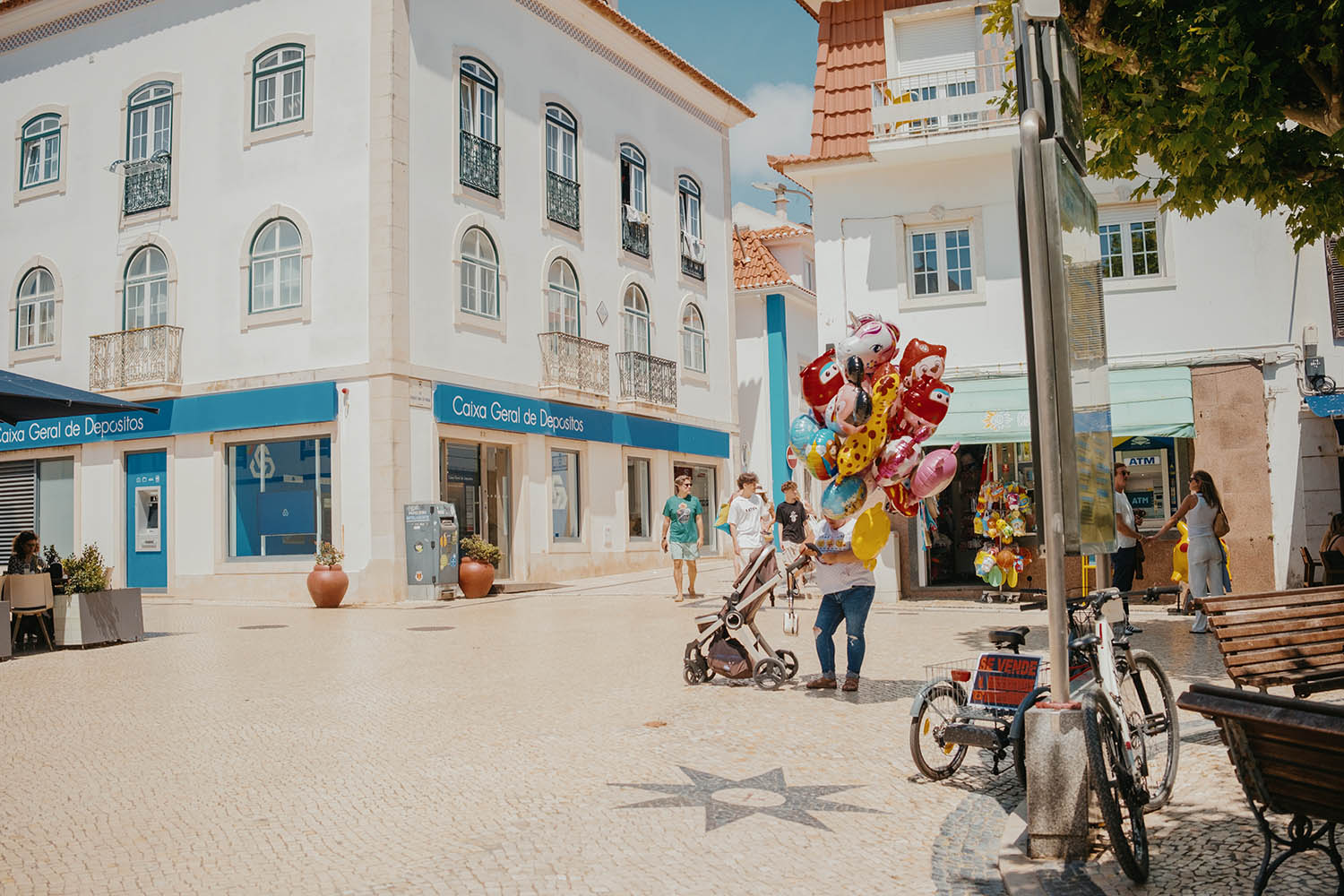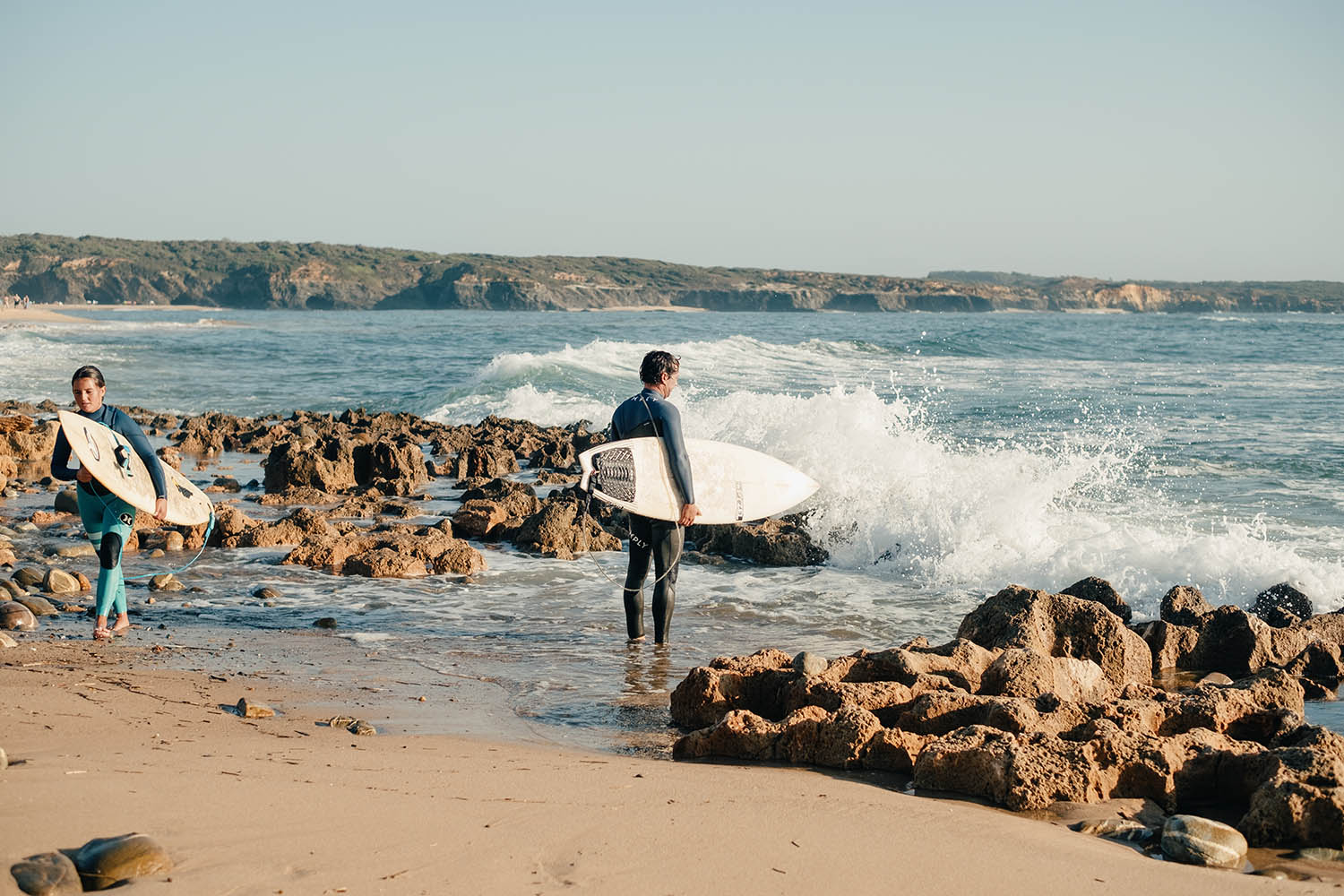Photographs by Matilde Viegas
Every summer without fail, holidaymakers arrive at my beach town home in the Algarve. A couple of weeks ago, travel envy got the better of me. I wanted a getaway of my own, which is why I find myself on a bus rattling across Ponte 25 de Abril, the red iron double-decker suspension bridge that connects the south of the country to Lisbon. I’m here for food, city sites and a culture fix.
When I arrive I beeline by tram to Belém, Lisbon’s landmark-laden district, situated on the banks of the Tagus River 9km from the city centre. The tram stop is near the striking 16th-century Belém Tower, a Unesco World Heritage site on the river (the interior is currently closed for restoration). Residents jog and cycle here. Old-timers cast a line. I prop myself against a jacaranda tree in Jardim Vasco da Gama, dedicated to the Portuguese explorer who first sailed directly from Europe to India, and marvel at the ornate, Manueline magnificence of Jerónimos Monastery. A queue is waiting to visit the cloister. If I had a loudspeaker, I’d advise them to also tour the criminally underappreciated Mosteiro de São Vicente de Fora, an equally elaborate but calmer, marble-heavy monastery, across town.

My plan is to amble back that way, along the waterfront promenade. But first I have asked my Lisbon friend Pátricia Dias for food advice in the city, and now she gets back to me. “Head to O Frade in Belém for Portuguese flavours sitting at the counter.” Co-founder of the Art of Tasting Portugal website, she curates food experiences in the capital. She knows her onions, so I oblige. I squeeze past the crowds waiting to buy world-famous custard tarts at Pastéis de Belém, soon passing the candy-pink president’s palace. At O Frade, I find a kitchen-facing stool and work my way through a bowl of razor clams cooked Bulhão Pato-style, swimming in a sauce of garlic, lemon and coriander.
As well as being home to many historical sites, Belém is Lisbon’s contemporary art hub. A succession of cultural spaces and galleries – MAC/CCB, MAAT, and Museu de Arte Contemporânea Armando Martins (Macam), which opened in March in a renovated 18th-century palace – provide artistic, air-conditioned detours. For deep pockets, Macam has an extravagent first-floor hotel (rooms from £330). I settle for a port-and-pear cocktail in àCapela, the palace’s deconsecrated chapel turned bar.
Outside, as the sun drops, the calçadas, Portugal’s patterned limestone and basalt pavements, glisten in the golden light, signalling time to head to higher ground. Lisbon’s hills are strenuous in the midday heat, but at sunset they are manageable and rewarding. I hop on a tram to lower Alfama, Lisbon’s oldest quarter, to schlep up the tapered streets, inhaling the summer scent of charcoaled sardines, and, 20 minutes later, reach the hilltop viewpoint Miradouro da Graça. My reward is the kind of view postcards were made for: Moorish São Jorge Castle’s 11 crenellated towers, surveying the higgledy-piggledy, multilayered metropolis.
I mention to a young man serving beers at the viewpoint’s kiosk that it’s quieter than I expected. “Everyone’s already left for the beach,” he says. I walk down to Rossio Square and sit with his words over a delicious sea bream dinner at O Marques, a low-key tasca tucked down a side street. Vintage tram photos, signs and even old rails set in the floor, and dishes of bitoques (egg-topped steaks) and bacalhau (salted cod), it feels like all Portugal in a diminutive dining room. But I can’t help wondering if the best way to experience summer like a local in Lisbon is… to leave? The coast is calling.

The next morning I join a spirited mix of surfers, summer-break students and parasol-clutching couples on the hour-long bus ride to Ericeira, a fishing village 39km northwest of Lisbon. It’s an uneventful inland drive until, about 8km shy of Ericeira, we pass the grandiose, mustard façade of the Unesco-listed Mafra National Palace, built in the 18th century as King João V’s summer residence, when Ericeira became a popular haunt for aristocratic bathing. The palace’s Baroque and Rococo library, lined with 30,000 or so bound books protected by pest-eating bats, is worth a peek.
Arriving at Ericeira, the air feels soothing, lighter and saltier. Maritime-themed azulejos (hand-painted tiles) and calçadas embellish the pedestrianised streets. With its whitewashed homes, it is a fetching, laid-back place, retaining more soul than other, more polished Portuguese beach towns, in part due to its working fishing harbour. This was the region’s busiest port in the mid-19th century, before the rhythm shifted to holidaying urbanites in the 1950s. Then, the Ponte 25 de Abril bridge eased access to Portugal’s southern coast, and off the Lisboetas flocked.
Peering down on central Praia dos Pescadores, both industries sit side by side. Half the beach is polka-dotted with umbrellas; fishing huts and nets hog the craggy flank. On a local information board I scan a poem by Portugal’s most famous writer, Fernando Pessoa, in which he laments how all love letters are ridiculous. It seems a strange verse to position here, where even the least lyrical soul could muster a few words of Atlantic admiration. There’s something hypnotic about Portugal’s west coast. Perhaps it’s the gnarly swell. Or knowing there’s little more between here and North America than the Azores. I snag a spot overlooking the beach’s rocky corner on Costa Fria’s restaurant terrace (reservations recommended), its seats the same shade of orange as the midday spritzes sipped by my fellow diners, and order petiscos (small plates). The fresh, tender octopus and flaky tuna are filled with a fusion of Mediterranean flav ours, reflecting its renowned Greek-born chef-founder Athanasios Kargatzidis’s signature culinary style and Ericeira’s international atmosphere. During the Second World War, Salazar’s surveillance police sent thousands of refugees to Ericeira, and more recently the population has swelled with surfers, remote workers, co-working spaces and açai cafés.

On elongated Praça da República, where elderly residents relax on tree-shaded benches and families eat almond and citrus zest ouriços – Ericeira’s bitesize pastries – I check out the World Surfing Reserve Interpretation Centre. I’ve surfed (well, attempted) once before, and I’m wondering if Ericeira’s championship-level waves, and the gentler ones for beginners like me, might be cause for round two. Snazzy and interactive, the small space documents Ericeira’s rise from an in-the-know surf-seekers hideout in the 1970s to becoming the second World Surfing Reserve in 2011. Stretching out along the reserve’s 2.5-mile coastline are seven world-class waves. I’m sold. It seems criminal not to take at least one lesson here.
My base for the evening is in Ribamar, near the reserve’s northernmost surf spot, Praia de São Lourenço, 5km north of town. After a short bus ride, I’m welcomed at guesthouse Villa dos Irmãos (dorms from £32, rooms from £86) by a handful of accents, and am handed a beer. Jonatan, one of the four Swedish siblings who founded the homely guesthouse after relocating in 2017, guides me to a spacious first-floor room. “We’re having a BBQ if you want to join?” he generously offers, but my heart is set on watching the sky dance pastel pink as I sway in the balcony’s ocean-view hammock.
My heart is set on watching the sky dance pastel pink as I sway in the ocean-view hammock
Once the sun disappears I search for seafood – an easy quest here. O Rochedo is the kind of unpretentious marisqueria (seafood restaurant) at which the Portuguese excel. Forget fine dining. Paper tablecloths, fair market prices and unfussy service are the hallmarks of a feast here, rounded off with a prego: beef steak sandwich. I tuck into a crowded silver tray of stuffed crab, plump prawns and percebes, the locally prized goose barnacles that are hand-harvested from rocks in death-defying fashion. Intimidating and somewhat ugly, the trick is to twist the hard outer skin and then bite off the thin strip of meat inside. The taste is pure ocean, especially if the briny juice sprays into your eyes.
Early the next morning, I swallow the salt again. My first attempt to catch a wave at Praia de Ribeira d’Ilhas, the reserve’s revered competition beach, results in a face-first flop. I’d booked in last minute with Progress Surf School, founded and led by Joana Andrade, the first Portuguese woman to surf Nazaré’s giant waves 75km up the coast. Simone, my instructor, is patient and calming. I manage to stand, briefly, on my final wave, and retreat to the golden sands, grinning. I understand why people can’t get enough of Ericeira. “I came here for one month,” Simone tells me. “Now it’s been six years.”
After a sorrowful goodbye to my hammock, I trek back to Ericeira proper along the clifftops. It takes two blissful hours to traverse the route, speckled with juniper and rock samphire, wooden staircases descending to various surfing bays along the way. Back in town, I stop for lunch at A Taberna, where a mural of a weathered fisherman watches me devour a bifana (marinated pork sandwich). I walk a few minutes back to the coast and enter the Chapel of Nossa Senhora da Boa Viagem, decked out in spellbinding blue and gold azulejos. The Virgin Mary, patron saint of Ericeira’s fishermen, is celebrated with processions and festivities here each August. I voice a few words of gratitude. Perhaps, between protecting sailors, she can guide this eager but inept surfer too.
